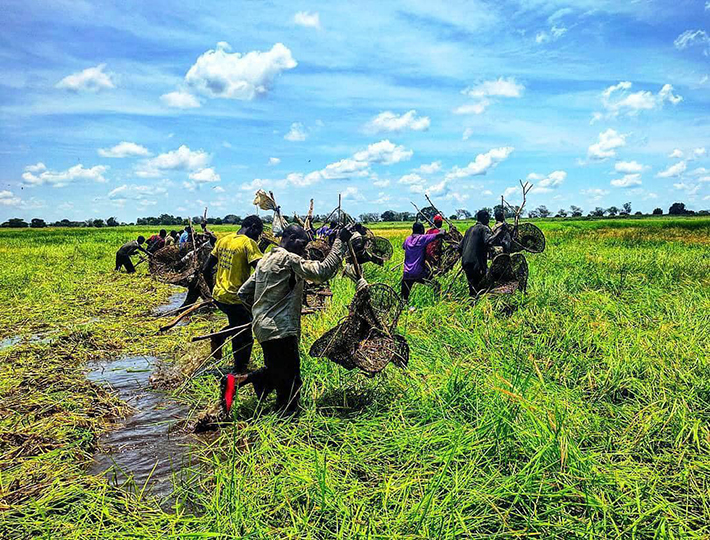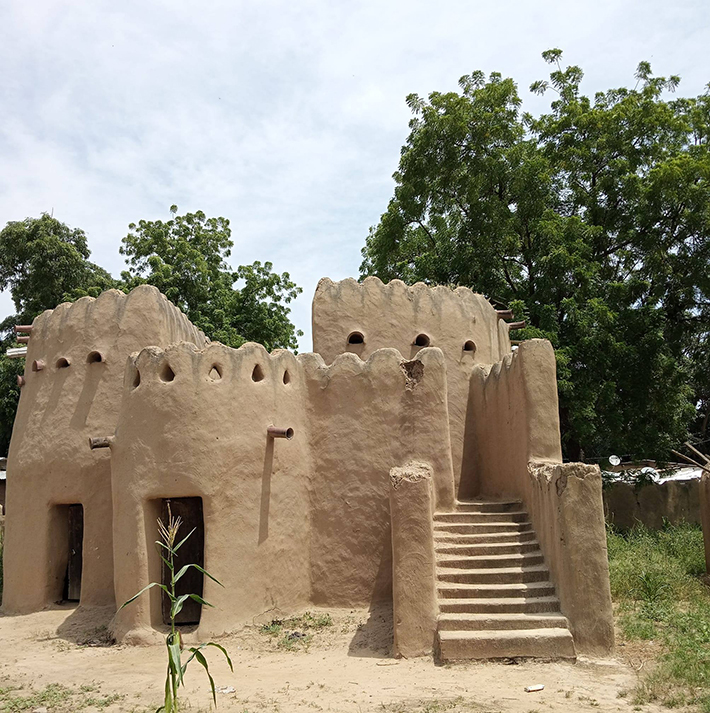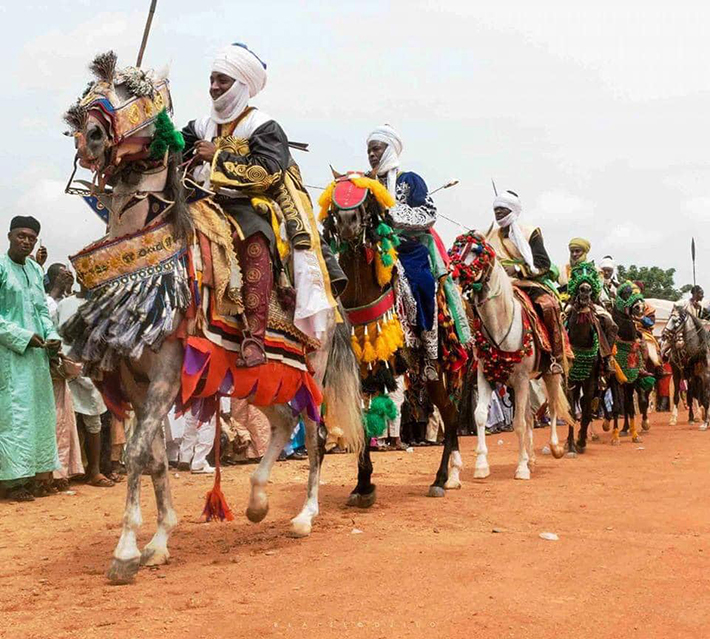|
||||||||||
| Home Top News Economy/Tech Culture/Sports China in Foreign Eyes Green Development Videos Intangible Cultural Heritages |
|
||||||||||
| Home Top News Economy/Tech Culture/Sports China in Foreign Eyes Green Development Videos Intangible Cultural Heritages |
| ChinAfrica |
| A Majestic Heritage |
| In Yaoundé, a festival celebrates the deep roots of the Sao-Kotoko people |
| By FRANÇOIS ESSOMBA | VOL. 17 October 2025 ·2025-10-10 |

Settled in the lower valleys of the Logone, Chari and Yobé rivers, in a region now shared by Cameroon, Chad, and Nigeria, the Sao-Kotoko are an ancient people of Central Africa. Composed of groups distinguished by their language and way of life, they gradually coalesced around influential cities, laying the foundations for a civilisation that would leave a lasting impact.
In the 10th century, the Kotoko, descendants of the Sao, settled in the heart of Central and West Africa. With roots stretching back thousands of years, they continue to preserve and share their culture and heritage along the banks of the Chari and Logone rivers. Their kingdoms, the birthplaces of a vibrant and enduring civilisation, stretch across both sides of the rivers.
The Sao civilisation is one of the oldest on the African continent and indeed in the world. Its origins are shrouded in mystery, continuing to captivate African and European ethnologists, who are reluctant to link it to the Kotoko or the Massa with absolute certainty. In Arabic, the word “Sô” literally means “the men of old.” According to oral tradition, the Sao were extraordinary people with remarkable powers. Although the oral tradition has glorified their memory, archaeological excavations have revealed evidence of a highly sophisticated civilisation, including urban fortifications dating back to 800 B.C. and the use of bronze, copper and iron.

A terracotta house, reflecting the architectural expertise of the Sao (COURTESY)
Thousand-year-old civilisation
Ancient accounts describe the Sao as robust, ingenious giants who were skilled fishermen and farmers. Sao women wore labrets, featuring simple discs or large plates, on their lips, which were thought to deter slave traders from the north. Long considered mythological figures, the Sao nevertheless appear in the accounts of Arab travellers from the Middle Ages onwards, particularly in the Lake Chad region.
Over the years, the history of the Sao civilisation has been incorporated into the curriculum of African schools, where it is ranked alongside Egyptian civilisation among the continent’s great civilisations. Their cities were fortified with vast mud walls of 3.5 to 4 metres wide, built on man-made mounds at the water’s edge. Numerous ritual figurines have been found there. Between the 17th and 19th centuries, some deceased Sao were buried in double jars. Placed in a foetal position in the first jar, which served as a coffin, they were then covered with the second jar. During periods of conflict, these jars were also used to hide young children, protecting them from violence.

The sultan’s mounted guards (COURTESY)
A living tradition
Despite their deep ancestral roots, the Sao-Kotoko people are gradually adapting to modern life. While some young people continue to work in fishing, agriculture, or traditional crafts, others pursue modern vocational training. Traditional clothing and architecture remain widespread and now coexist alongside contemporary buildings in the seven Sao-Kotoko sultanates of Cameroon.
A festival is held annually to celebrate the heritage of the Sao-Kotoko people. In order to preserve this heritage while sharing with the world, local elites such as Oumar Ali, president of the Sao-Kotoko Festival Organising Committee, are committed to promoting a dialogue between tradition and modernity. “This is a unique opportunity to showcase our cultural assets, both tangible and intangible, and highlight the terracotta civilisation, a pillar of our heritage. The choice of Yaoundé reflects our desire to share our customs and traditions with the national and international communities. At the same time, the organisers want to use this festival to unite the cultural heritage of the Sao-Kotoko people with the idea of national unity,” he explained.
The mastery of terracotta is one of the most emblematic features of this culture and has become a veritable cultural industry. Ali Alhadji Abba, president of the Steering Committee of the Sao Cultural Association, said, “This ancient civilisation, which transcends time, deserves greater recognition.”
The Yaoundé festival attracted a large delegation from Chad and Nigeria, who were enthusiastically welcomed by the other participants. Mahamat Ahmed Ali, a prominent figure from Chad, said with pride, “We are a unique people, and this festival is an opportunity for us to showcase our skills and our way of life.”
Pierre Ismaël Bidoung Mpwatt, Cameroon’s minister of arts and culture, emphasised the importance of this rich heritage: “Culture is a set of human, moral, social and aesthetic values. As such, the Sao-Kotoko culture is fully in line with the government’s policy of promoting the traditions and artefacts of the peoples of the north.”
At the end of the festival, the seven Sao-Kotoko sultans present in the country expressed their desire to give their heritage an international dimension. Steps have already been taken with the Cameroonian government, via the Ministry of Arts and Culture, to have the festival listed as UNESCO Intangible Cultural Heritage.
| About Us | Contact Us | Advertise with Us | Subscribe |
| Copyright Beijing Review All rights reserved 京ICP备08005356号-5 京公网安备110102005860号 |